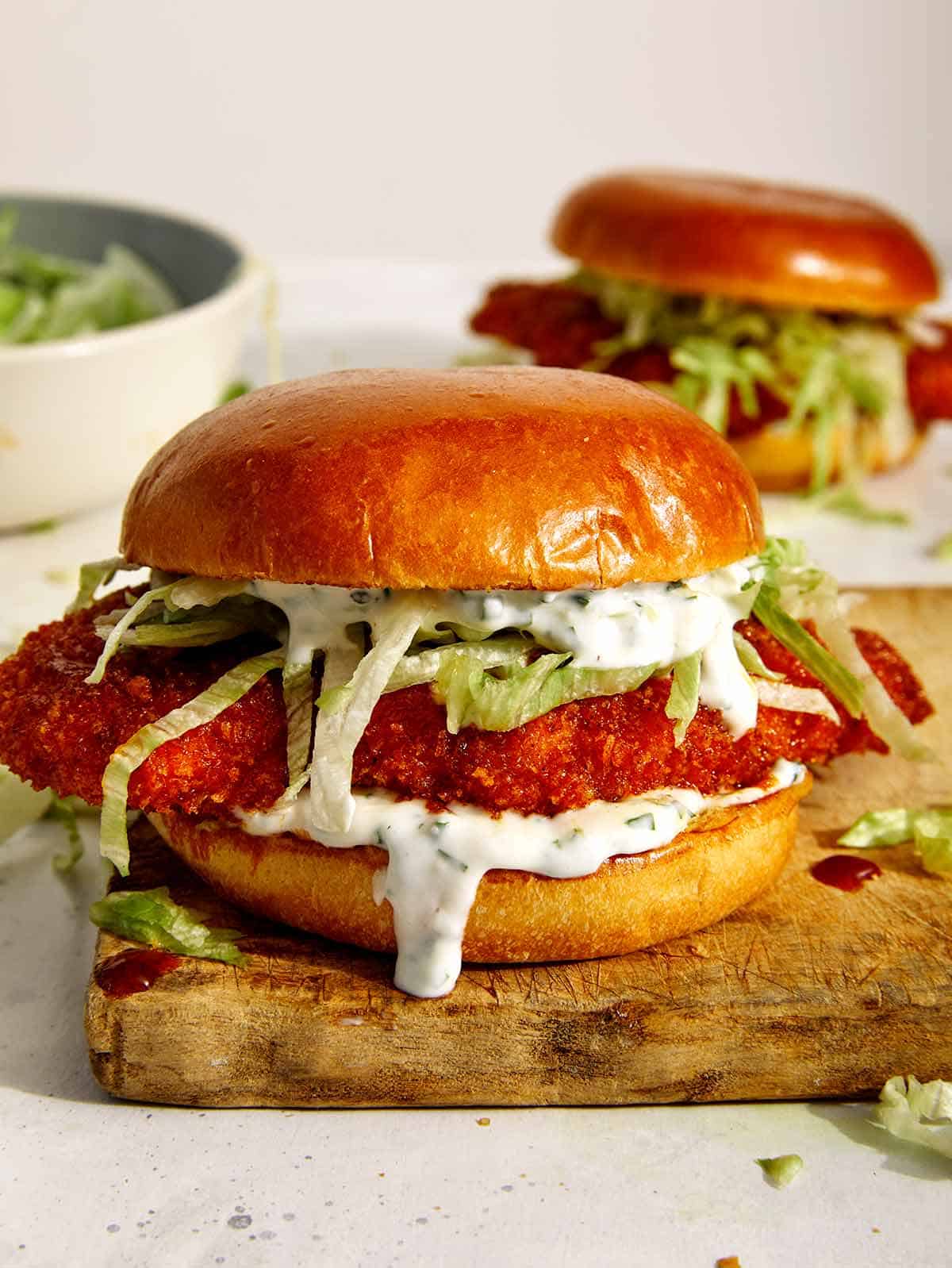How to Open a Restaurant
Do you want to know how to open a restaurant? This guide will show the steps you need to take so you can start your business on the right foot.


Owning a restaurant seems like a fun adventure because, for one thing, everyone needs to eat, right? But when it comes to actually figuring out how to open a restaurant and make it profitable, it’s not a task for the faint of heart. This guide walks you through the crucial steps, from picking the right location to managing your finances to turning your restaurant dreams into a successful reality.
Simple Steps to Open a Small Restaurant
Every business owner takes specific actions to launch their venture, and restaurant owners are no exception. Nevertheless, there are several unique and essential steps to follow to turn your dream restaurant into a reality:

Decide on a Niche
Breakfast, lunch, or dinner? Service style? Specializing in cuisine, such as Italian, Greek, or Vietnamese? Family-friendly atmosphere or fine dining restaurant?
Quick-service restaurants competing with fast-food restaurants or full-service restaurants? Which of those restaurant concepts fits your goals and your target market in the food service industry? With your niche in hand, your next step is to look into how to come up with a restaurant name that best describes the place.
Pick a Location
Remember, whether you purchase or lease, the facility is the largest part of restaurant costs. And a facility that is exactly what you want inside might not thrive because it is not the right location. Granted, finding the best places to start a restaurant is important, but you’ve probably also seen a restaurant in the middle of nowhere. So, location is important, but good food will bring in customers no matter where it is.
For example, is it accessible to handle deliveries of food and supplies? Can prospective customers find it, and is it near enough customers for both supporting your anticipated sales volume and hiring employees?
Restaurant Business Plan
Before opening a restaurant, plan all the details. You’ll need an excellent written business plan, which will help you if you approach a financial institution for a loan.
Here are some key elements of a solid business plan:
Executive summary
Mission Statement
Business Description/Company Overview
Market Research/Market Group
Sample Menu
Detailed Financial Information for you and any partners
Marketing Plan
Create a Business Entity
The recommended setup in the food business is a limited liability company or LLC. The LLC will keep your business and personal assets separate, protecting your personal assets.
Before you firmly decide, seek legal advice.

Research Licenses and Permits
Here are the basics. You may need additional licenses and permits according to your state and local regulations.
Business License
Liquor license (if required)
Foodservice license
Permit to operate and other requirements of the local health department.
Food handlers permit (for restaurant workers involved in food preparation and serving (these permits are part of food safety regulations).
Permit to erect a business sign. Local laws vary on size and lighting.
EIN – Employer Identification Number
Get Your Taxes in Order
You’ll need your EIN to pay federal and state taxes on the payroll. You’ll also use your EIN to pay taxes on sales and on restaurant tips.
New for many states is an additional “health tax.” The health tax is assessed on the sale of food products deemed to be unhealthy, such as soda.
Open a Business Bank Account
The separate account makes it easier to keep track of financials. You’ll also need a business credit card.
Get Business Insurance
If you are buying or owning your building, you’ll need commercial property insurance. You’ll also need general business insurance for the restaurant and its equipment and supplies.
If you plan to deliver food using employees, those vehicles will need commercial auto insurance.
If you have employees, you’ll need to pay workers comp insurance and unemployment insurance.
Look into Small Business Loans
One of the best financial resources for restaurant funding is the Small Business Administration. The Cadillac of the SBA loans is the SBA 7 (a), which provides a low-interest small business loan for businesses with fewer than 40 employees. For more information about SBA small business lending for restaurant loans, contact an SBA cooperating lender for a bank loan.
Sign the Lease
Have an attorney review the lease before you sign.
Design Your Restaurant Space
In the food prep area, a smooth workflow design is a necessity.
In the dining room, you can let your personality shine and use the decor to help attract your target customers. Whether it is a large or small restaurant design, make sure it complements your menu and your customers.
Create Your Menu
As you start out, try to keep a limited menu. When you choose your menu items, make it a point to “cross-utilize” food supplies. For example, the crab meat for today’s crab patties, if not sold, can be used for crab dip tomorrow.

Find a Food Supplier
Remember two things about food suppliers – they are also striving to make money and they are also supplying the local competition.
You can use the Better Business Bureau to get its ratings on available vendors.
Purchase Restaurant Equipment
Here are some essential items to consider: ovens (pizza oven), ranges, exhaust equipment, griddles/grills, deep fryer, rotisserie ovens, refrigeration and freezers, cash registers/restaurant POS systems, security systems, tables and chairs, utensils, dishes, pots, and pans. Additionally, consider purchasing used commercial kitchen equipment to help reduce costs significantly.
An important part of all restaurants is the ability to wash and rinse dishes in water that is heated to the required temperature.
Start a Marketing Campaign
As you raise money for your new venture, don’t forget to set a chunk aside for your restaurant marketing. Here are a few ways you can promote your restaurant:
Open House when you open.
Support the local community – sponsor a youth team, supply food for local events, etc.
Use your website and FB page to advertise specials and events at the restaurant.
Offer holiday specials for events such as Mother’s Day, Father’s Day, Valentine’s Day, and more.
Employ Staff
The main role is general manager, who is usually in charge of hiring and firing, purchasing, and marketing.
Other key roles include assistant manager, hostess, cashier, wait staff, line cook, and head chef. Be prepared to offer higher than minimum wage to attract and keep staff. How many employees you need depends on the scope of your operation.
Launch Your Business
Finally! Invite local media to the grand opening ribbon cutting. Offer food samples.
Grow Your Business
One way to increase engagement with the community is by partnering with other businesses. Partner for a special event. For example, for Mother’s Day partner with a florist and a spa, with all three businesses offering a package deal.
Successful restaurants with an in-town location increase foot traffic using message boards on the sidewalk. Add outdoor dining if your location is capable.
Be a Successful Restaurant Owner
Dance with the one that brung ya. In other words, if your Wing Night or Sushi Night is incredibly popular, don’t change it. Add to it.
Always be on the lookout for food options that are trending, such as the popularity of the Keto Diet or Vegetarian offerings.
If you are curious about how to open a restaurant, first, acknowledge the grim statistics:
- Seventeen percent of new restaurant ventures fail within their first year of operation. This statistic pertains solely to brick-and-mortar establishments and does not include food truck businesses.
- The median lifespan for new restaurants is 4.5 years. Yet, new restaurants open all the time. You can flip that first statistic and say that 83% of new restaurants succeed.
- And if 17% of restaurants fail and the median lifespan is 4.5 years, that means many restaurants remain in operation for many more years.
- Here’s everything you need to know before you open your doors.
Why You Should Open Your Own Restaurant
Here are the top 5 reasons to open a new restaurant:
You love restaurants.
You’re one of the small business owners who want to create a cornerstone for a community.
You want a business that manifests your personality, where you’re your own boss.
You love the daily social scene of making and meeting friends.
You love a business that is different every day.

The Restaurant Industry in the United States
Restaurant businesses were one of the small businesses hardest hit by the pandemic.
In recent times, there have been more than one million restaurants in the US. Those restaurants employ 9.9 million workers.
In recent times, that number of restaurants has dropped to about 625,000, with a staff of about 16 for each. The average gross sales for restaurants during this period was $1.2 million.
How Much Does It Cost to Start a Restaurant?
The major cost for a future restaurant is the purchase or lease of a facility. Whether you purchase or lease, you can expect to spend from $250,000 to $2 million annually for the space.
Even if you purchase an established restaurant, anticipate spending between $10,000 and $1 million on renovations.
Choosing the right location for your restaurant concept is crucial to your research for the new business. A misstep in this area can adversely affect your restaurant’s success. So, what is the cost to start a restaurant? The answer varies significantly, and the total cost will ultimately depend on your specific operations.
Challenges and Considerations in the Restaurant Business
Opening a restaurant can be a rewarding venture, but it also comes with its fair share of challenges and considerations. Aspiring restaurant owners should be aware of these factors to make informed decisions and increase their chances of success. Here are some key challenges and important considerations to keep in mind:
- Intense Competition: The restaurant industry is highly competitive, with numerous establishments vying for customers’ attention. Standing out in the crowded market requires a unique concept, exceptional food quality, and excellent customer service.
- High Failure Rate: As mentioned earlier, the restaurant business has a relatively high failure rate, with around 17% of ventures closing within the first year. New restaurant owners must have a solid business plan, sufficient capital, and a thorough understanding of the market to avoid becoming part of this statistic.
- Labor Costs and Staffing: Labor costs can be a significant portion of a restaurant’s expenses. Hiring and retaining skilled and reliable staff is essential for delivering a positive customer experience. Employee turnover can also be an ongoing challenge in the industry.
- Health and Safety Compliance: Restaurants must comply with strict health and safety regulations to ensure the well-being of their customers and employees. Failure to meet these standards can lead to fines, closures, and damage to the restaurant’s reputation.
- Managing Food Costs: Controlling food costs is crucial for maintaining profitability. Restaurant owners must strike a balance between offering high-quality ingredients and managing expenses to avoid wastage and spoilage.
- Seasonal and Economic Fluctuations: Restaurants may experience seasonal fluctuations in business, affecting revenue and cash flow. Economic downturns can also impact dining-out habits and consumer spending.
- Location and Visibility: Choosing the right location is vital for attracting customers. A restaurant in an unfavorable or hidden location may struggle to attract foot traffic and visibility.
- Marketing and Branding: Effective marketing and branding strategies are essential for creating a strong presence in the market. Restaurants must invest in marketing efforts to reach their target audience and build a loyal customer base.
- Menu Development and Flexibility: It’s essential to craft a menu that resonates with your target audience and aligns with the restaurant’s concept. Moreover, being willing to modify the menu in response to customer feedback and evolving trends is key to achieving long-term success.
- Managing Online Reviews and Reputation: Online reviews and social media have a significant impact on a restaurant’s reputation. Restaurants must actively monitor and respond to customer feedback to maintain a positive image.
- Financial Management: Proper financial management is essential for the restaurant’s sustainability. Tracking expenses, managing cash flow, and forecasting revenue are critical aspects of financial planning.
- Sustainability and Environmental Considerations: Increasingly, consumers are seeking sustainable and environmentally friendly dining options. Restaurants that adopt eco-friendly practices may attract environmentally conscious customers.
| Challenges and Considerations | Description |
|---|---|
| Intense Competition | The restaurant industry is highly competitive, with numerous establishments vying for customers' attention. Standing out in the crowded market requires a unique concept, exceptional food quality, and excellent customer service. |
| High Failure Rate | The restaurant business has a relatively high failure rate, with around 17% of ventures closing within the first year. New restaurant owners must have a solid business plan, sufficient capital, and a thorough understanding of the market to avoid becoming part of this statistic. |
| Labor Costs and Staffing | Labor costs can be a significant portion of a restaurant's expenses. Hiring and retaining skilled and reliable staff is essential for delivering a positive customer experience. Employee turnover can also be an ongoing challenge in the industry. |
| Health and Safety Compliance | Restaurants must comply with strict health and safety regulations to ensure the well-being of their customers and employees. Failure to meet these standards can lead to fines, closures, and damage to the restaurant's reputation. |
| Managing Food Costs | Controlling food costs is crucial for maintaining profitability. Restaurant owners must strike a balance between offering high-quality ingredients and managing expenses to avoid wastage and spoilage. |
| Seasonal and Economic Fluctuations | Restaurants may experience seasonal fluctuations in business, affecting revenue and cash flow. Economic downturns can also impact dining-out habits and consumer spending. |
| Location and Visibility | Choosing the right location is vital for attracting customers. A restaurant in an unfavorable or hidden location may struggle to attract foot traffic and visibility. |
| Marketing and Branding | Effective marketing and branding strategies are essential for creating a strong presence in the market. Restaurants must invest in marketing efforts to reach their target audience and build a loyal customer base. |
| Menu Development and Flexibility | Creating a menu that appeals to the target market and reflects the restaurant's concept is crucial. Additionally, staying open to menu adjustments based on customer feedback and changing trends is vital for long-term success. |
| Managing Online Reviews and Reputation | Online reviews and social media have a significant impact on a restaurant's reputation. Restaurants must actively monitor and respond to customer feedback to maintain a positive image. |
| Financial Management | Proper financial management is essential for the restaurant's sustainability. Tracking expenses, managing cash flow, and forecasting revenue are critical aspects of financial planning. |
| Sustainability and Environmental Considerations | Increasingly, consumers are seeking sustainable and environmentally friendly dining options. Restaurants that adopt eco-friendly practices may attract environmentally conscious customers. |
While the restaurant business presents challenges, overcoming them can lead to a successful and fulfilling venture. Conducting thorough research, seeking advice from industry experts, and developing a comprehensive business strategy can help aspiring restaurant owners navigate these obstacles and build a thriving establishment.
Is a restaurant profitable?
The profitability of a restaurant boils down to a fundamental principle: your sales must exceed your costs. This includes everything from the ingredients for your dishes to staff wages, kitchen equipment, and other operational expenses such as utilities and maintenance. To have one of the most profitable restaurants , it’s essential to have a detailed understanding of every dollar spent.
But it’s more than just numbers. It involves strategic menu pricing, efficient inventory management, and minimizing waste. Your ability to negotiate with suppliers for better prices and your knack for creative yet cost-effective marketing strategies can significantly impact your bottom line. It’s also crucial to keep an eye on the market trends and adapt accordingly, whether it’s tweaking your menu or adjusting operating hours to meet customer demand.
Furthermore, effective staff training is essential for profitability. Employees who receive proper training not only deliver superior customer service, which encourages repeat business and generates positive word-of-mouth, but they also work more efficiently, minimizing errors and waste. Additionally, investing in energy-efficient appliances and sustainable practices can result in long-term cost savings.
Can I open a restaurant with no experience?
Yes. In fact, many owners lend their business and marketing expertise to the venture and know little about the business.
Remember that the location is of the highest importance. After that, hire the best.
Image: Depositphotos
This article, "How to Open a Restaurant" was first published on Small Business Trends












































































